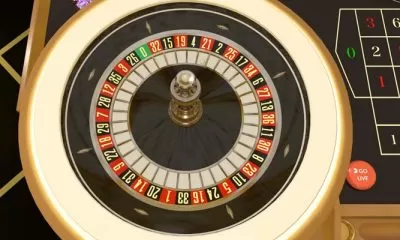Casino
Play The Game of Poker Like a Pro Using This Guide!
Published
7 months agoon
By
Sam Jonson
Poker is a card game with diverse variations played globally, where players have the options to match the bet (calling), increase it (raising), or fold and concede the hand.
Learn how to play to be a poker pro!
How to play real poker online?
While there is a plethora of poker variants documented in the game’s literature, they all have common fundamental elements. A standard poker hand consists of five cards, and the hand’s value is inversely related to its mathematical likelihood – meaning, the rarer the card combination, the higher the hand’s ranking.
Players have the option to bet, claiming they hold the best hand, and other players must either match the bet (calling) or fold. There’s also room for strategy, as players can employ a bluff by wagering that they possess the best hand even when they don’t, potentially winning if opponents with stronger hands opt not to call the bet.
Game rules
Poker comes in variants suitable for 2 to 14 player numbers, but in most cases, the optimal number of players falls within the range of 6, 7, or 8. The primary goal is to secure the “pot,” which represents the total sum of all wagers placed by all players during a single round. Winning the pot can be achieved by holding the highest-ranking poker hand or by placing a bet that no other player chooses to match. These fundamental principles apply to nearly all poker real money games.
Cards in Poker
Poker is typically conducted using the conventional 52-card deck, with the cards in each of the four suits (Spades, Hearts, Diamonds, Clubs) ranked as follows: A (high), K, Q, J, 10, 9, 8, 7, 6, 5, 4, 3, 2, and occasionally A is low, specifically in straight/straight flush hands and specific poker variations.
During social poker games, particularly in “dealer’s choice” sessions where each player takes turns dealing and choosing the game, it’s common to denote particular cards as wild cards. This card can represent any other poker card chosen by the holder. There are various ways to introduce wilds into a game, with some of the most popular methods being –
- A joker used as a wild card in a 53-card deck.
- Similar to the Joker variant, a 53-card deck is used, including a joker referred to as the bug, which can be counted as a fifth ace or used to complete a flush, straight, or specific special hands.
- In the deuces wild variation, all four deuces (2s) in the deck are considered wilds.
- In a standard deck, only the king of diamonds, jack of spades, and jack of hearts are depicted in profile. These cards, known as “one-eyes,” are often designated as wild cards in a real poker online game.
Such wild card variations add excitement and unpredictability to poker games, as they can significantly affect the hands and strategies used by players.
The rank of poker hands
The standard ranking of poker hands is based on their probabilities or odds.
The highest is a “Royal flush” (A, K, Q, J, 10 of the same suit), followed by a “Straight flush” (five consecutive cards of the same suit). Next is “Four of a kind,” then a “Full house” (Three of a kind + a pair). After that, a “Flush” (five same-suit cards), a “Straight” (five consecutive cards of any suit), “Three of a kind,” “Two pair,” and “One pair.” The lowest hand is a “High card” when no other hand is made.
In cases where two or more hands are identical, they tie, and the winnings are evenly divided among the winners. It’s important to note that the suits of the cards hold no relative rank in poker.
When wild cards are in play, the highest possible hand becomes “five of a kind,” which surpasses even a straight flush. If there are multiple wild cards, it’s possible to have identical four-of-a-kind or three-of-a-kind hands.
In such situations, ties are resolved by considering the highest unmatched cards or secondary pairs, particularly in the context of a full house, which is a five-card hand consisting of three of a kind and a pair.
Dealing
To begin the poker real cash game, a player takes a deck of cards and distributes them counterclockwise one by one, faceup, until a jack emerges. The player who receives this card becomes the initial dealer. The roles of dealing and betting consistently shift to the left among players. Before each deal, any player can shuffle the cards, with the dealer having the final opportunity to shuffle. The dealer is obliged to present the shuffled deck to the player on their right for a cut. If this player turns down the offer, any other participant can perform the cut.
Betting in Poker
Before the start of a round, every player may be obligated to contribute to the pot, ensuring their sum contribution matches or exceeds the previous player’s. Players are considered “in the pot” or active participants when they meet this requirement.
Every round has specific poker betting phases, depending on the particular poker variation. Within each betting phase, the initial player to place a poker bet is termed the “bettor”, while a player who matches the preceding bet “calls”, and one who increases the bet “raises”.
In some versions, a player can “check”, meaning they stay in without betting as long as no prior player has bet in that phase. As a player cannot raise their own bet, a betting phase concludes when the last raiser has their turn again or when all players check.
Following each betting phase except the final one, dealing resumes. In the last betting phase, the “showdown” occurs, wherein every active player reveals their complete hand, and the highest-ranking hand claims the pot.
Suppose a player chooses not to meet these criteria; they discard their hand, “fold”, and are no longer eligible to compete for the pot.
Poker betting limits
Most online poker games impose restrictions on the maximum bet that can be made during a game. Three commonly used methods are employed for this purpose.
1.Fixed limits
In fixed-limit games, players are restricted from betting or raising beyond the predetermined limit. In draw poker, the limit typically doubles after the draw compared to before it—such as going from five chips before the draw to ten chips after it.
In stud poker, the limit usually goes up to twice the previous amount during the final betting stage, which also applies when any player’s visible cards form a pair. Additionally, in fixed-limit games, there is typically a limit imposed on the number of raises allowed within each betting round in a poker cash game online.
2.Pot limit
In pot-limit games, players are allowed to bet/raise up to the current amount in the pot. When making a raise, a player can start by putting in the chips required to match the previous bet and then increase the bet by the total amount in the pot. In such contests, it’s common to set a maximum limit on a bet/raise, irrespective of the pot’s size.
3.Table stakes
This approach closely resembles the no-limit game. In this method, each player’s betting limit is determined by the number of chips they have on the table at the start of the deal. They cannot bet more than this amount, but they can call any higher bet by going “all in” and competing for the pot during the showdown.
Players with more chips can continue betting, but their additional bets contribute to one or more side pots, as decided by the players who fully contributed to the side pot. If a player folds from a side pot, they also forfeit their stake in the main pot, essentially giving up their claim to the original pot to the player whose bet they did not match. Consequently, there can be different winners for the main pot and various side pots.
Poker video variations
Poker is a diverse card game with several principal forms, each with its own rules and strategies. Some of the most prominent variations of poker cash game online are listed below.
Texas Hold’em
Perhaps the most popular poker variation worldwide. Players are dealt two private cards and use five community cards to form the best hand possible. Betting occurs in four rounds, and the goal is to win chips or money from other players.
Omaha
Similar to Texas Hold’em, players receive four private cards and use five community cards. However, they must use exactly two of their private cards and three community cards to make their hand, adding complexity to the game.
Seven card stud
In this traditional cards poker form, players receive seven cards, three private and four face-up. Betting happens after each card is dealt, and players aim to make the best five-card hand.
Five card draw
A classic form where players are dealt five private cards, and they have the opportunity to exchange some or all of their cards in an attempt to improve their hand. It’s typically played in home games.
Razz
A lowball variation where the goal is to have the lowest possible hand. Aces are low, and straights and flushes don’t count against you.
HORSE
An acronym for a mixed-game format, including Hold’em, Omaha, Razz, Seven card stud, and Eight or better (a low version of Omaha). Players rotate through these games in fixed intervals.
Pot-limit and No-limit
These are betting structure variations applied to most pokeri forms. In pot-limit, bets can’t exceed the current pot size. In no-limit, players can bet all their chips at any time, adding an element of bluffing and risk.
Tournament poker
In addition to these variants, poker real money game is often played in tournament formats like Texas Hold’em. Players compete to win chips from others, with blinds increasing over time, creating pressure to accumulate chips.
These are just a few of the principal forms of poker, each offering a unique gaming experience and requiring a mix of skill, strategy, psychology, and luck to succeed. The choice of which form to play often depends on personal preference and the desired level of complexity.
Playing poker can be a rewarding and intellectually stimulating experience. It challenges your strategic thinking, decision-making, and psychological skills while offering social interaction and the potential for profits. Whether for fun or as a serious pursuit, poker can provide entertainment and personal growth opportunities. So, start playing and winning poker games now!
You may like
-
High Low Game: How and Why to Play, Variations, and Strategies
-
Live Speed Baccarat: Game Rules, How to Play, and Strategies
-
A Comprehensive Guide to Play Poker Online with Friends
-
How to Play Roulette: Everything You Need to Know about Casino Roulette Game
-
Play Online Roulette Successfully: 6 Proven Strategies to Help You Win
-
Caribbean Stud Poker: Poker Hierarchy, Payouts, and How to Play












